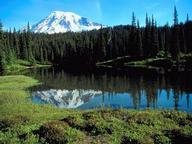Quiz Answer Key and Fun Facts
1. Meriwether Lewis first joined the army to quell what rebellion?
2. In 1802 a book was written which became one of the main reasons for President Thomas Jefferson to consider forming the Corps of Discovery. Who was the author of this visionary book?
3. Dr. Benjamin Rush of Philadelphia, the foremost physician of his day, gave valuable medical advice to Meriwether Lewis before the expedition began. One of his more memorable medications was known as 'Rush's Thunderbolt.' What was it used for?
4. President Jefferson asked Lewis to be especially watchful for giant creatures roaming the West. Jefferson had been sent some unusual fossil remains from western Virginia and was convinced that creatures not known in the East might still be alive in the West. What beast was Jefferson referring to when he asked the Corps of Discovery to try and capture a 'Megalonyx'?
5. On May 21, 1804, at 3:30 p.m., the Corps of Discovery departed from St. Charles, Missouri. Besides Lewis, Clark, and York (Lewis' manservant), how many men began the expedition on that day?
6. Many strange animals were discovered during the expedition (alas, no Megalonyx). Which of these animals was already known in the United States?
7. What is the significance of Pompey's Pillar, located on the Yellowstone River near Billings, Montana, designated as a National Monument by President Bill Clinton in 2001?
8. An unfortunate accident happened to Capt. Clark on August 11, 1806. What was it?
9. What improbable name is given to a small, driftwood filled, sandy area where Captain Clark "found a flounder on the beech" on November 18, 1805?
10. Which of the statements is true about the aftermath of the Lewis and Clark expedition?
Source: Author
LaLaLoopy
This quiz was reviewed by FunTrivia editor
bloomsby before going online.
Any errors found in FunTrivia content are routinely corrected through our feedback system.

